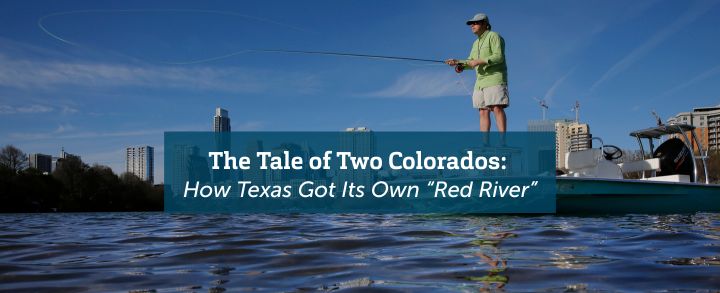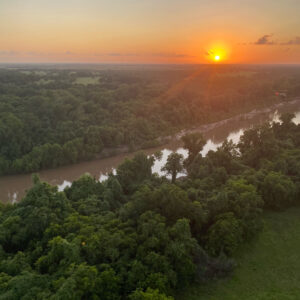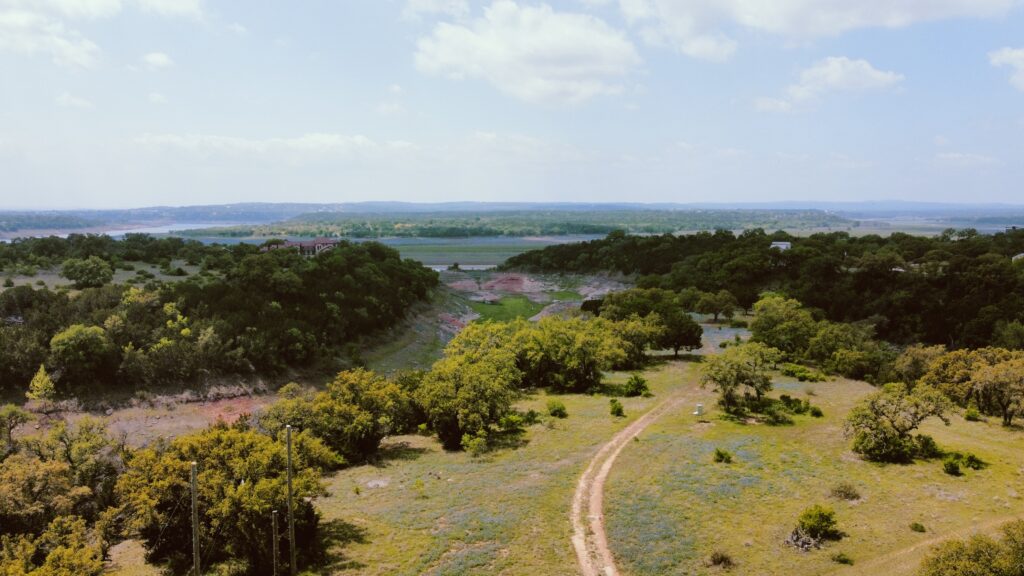The Tale of Two Colorados: How Texas Got Its Own “Red River”
May 8, 2025
When most Americans hear ‘Colorado River,’ they picture the grand canyons of the Southwest, carved by a mighty waterway stretching from the Rocky Mountains to Mexico. But deep in the heart of Texas flows another river with the same name — one no less important to the state it serves. The Colorado River of Texas, entirely contained within state borders, has a story all its own, shaped by exploration, natural resource management, and generations of people who have depended on its waters.

A Spanish Legacy in a “Colored River”
The Texas Colorado River got its name during the Spanish exploration of North America in the 17th century. Spanish explorers, including Alonso de León, used the term ‘Rio Colorado’ — Spanish for ‘colored river’ — to describe its muddy red waters, stained by sediment and clay. Although the name was originally associated with what is now the Brazos River, it eventually came to refer to the river we now call the Colorado. This renaming likely stemmed from mapping errors, misunderstandings, and the exploratory chaos of the time.
Two Rivers, Same Name — But No Connection
Despite sharing a name, the Colorado River in Texas has no connection to the more famous Colorado River of the American Southwest. The latter flows westward through the Rocky Mountains, carving the Grand Canyon and emptying into the Gulf of California. In contrast, the Texas Colorado flows southeast from Dawson County through the Hill Country, Austin, and eventually to the Gulf at Matagorda Bay. At 862 miles long, it’s the longest river to begin and end entirely within the same state.
From Floods to Hydropower: Enter the LCRA

The Colorado River has long been critical to life in central Texas — but it hasn’t always been manageable. Severe flooding and prolonged droughts plagued communities in the early 20th century. In response, the Texas Legislature created the Lower Colorado River Authority (LCRA) in 1934. Its mission: to harness the river’s potential and protect those who lived near it. Over time, LCRA built a chain of reservoirs and dams, including Buchanan Dam and Mansfield Dam, giving rise to the Highland Lakes system that now supplies water, generates hydroelectric power, and supports recreation across central Texas.
The Colorado Today: Lifeblood of a Growing State
Today, the Texas Colorado River continues to shape the state’s landscape and economy. It supplies water to millions — not just for drinking, but for irrigating rice fields, powering industry, and supporting agriculture. It flows past major cities like Austin and sustains wetlands and wildlife habitats vital to regional biodiversity. Balancing these needs is no easy task, particularly as Texas faces increased demand, population growth, and a changing weather.
More Than a River — A Cultural Touchstone
For many Texans, the river is more than a utility — it’s a symbol of place. Generations have paddled its waters, fished from its banks, built homes in its valleys, and celebrated life along its course. It’s present in family histories, small-town festivals, and even local myths. The Colorado River has quietly threaded itself into the identity of central and southeast Texas — a reminder that not all great rivers need canyons to be legendary.
Though its name may have come from a case of mistaken identity, the Colorado River of Texas has earned its place in the story of the Lone Star State. It may not be the river that carved the Grand Canyon — but it helped carve out a home for millions of Texans.
Seasonal Fishing on the Texas Coast: When, Where & Who to Go With
November 17, 2025
Texas Tall Tales: Spooky Folklore and Legends That Still Haunt Us
October 14, 2025
Rice Farming: The Heartbeat of the Texas Coast
September 30, 2025
Fried Dove Breast Filets with Cream Gravy and Angel Biscuits
September 11, 2025
Hearty Venison Chili Recipe
September 11, 2025